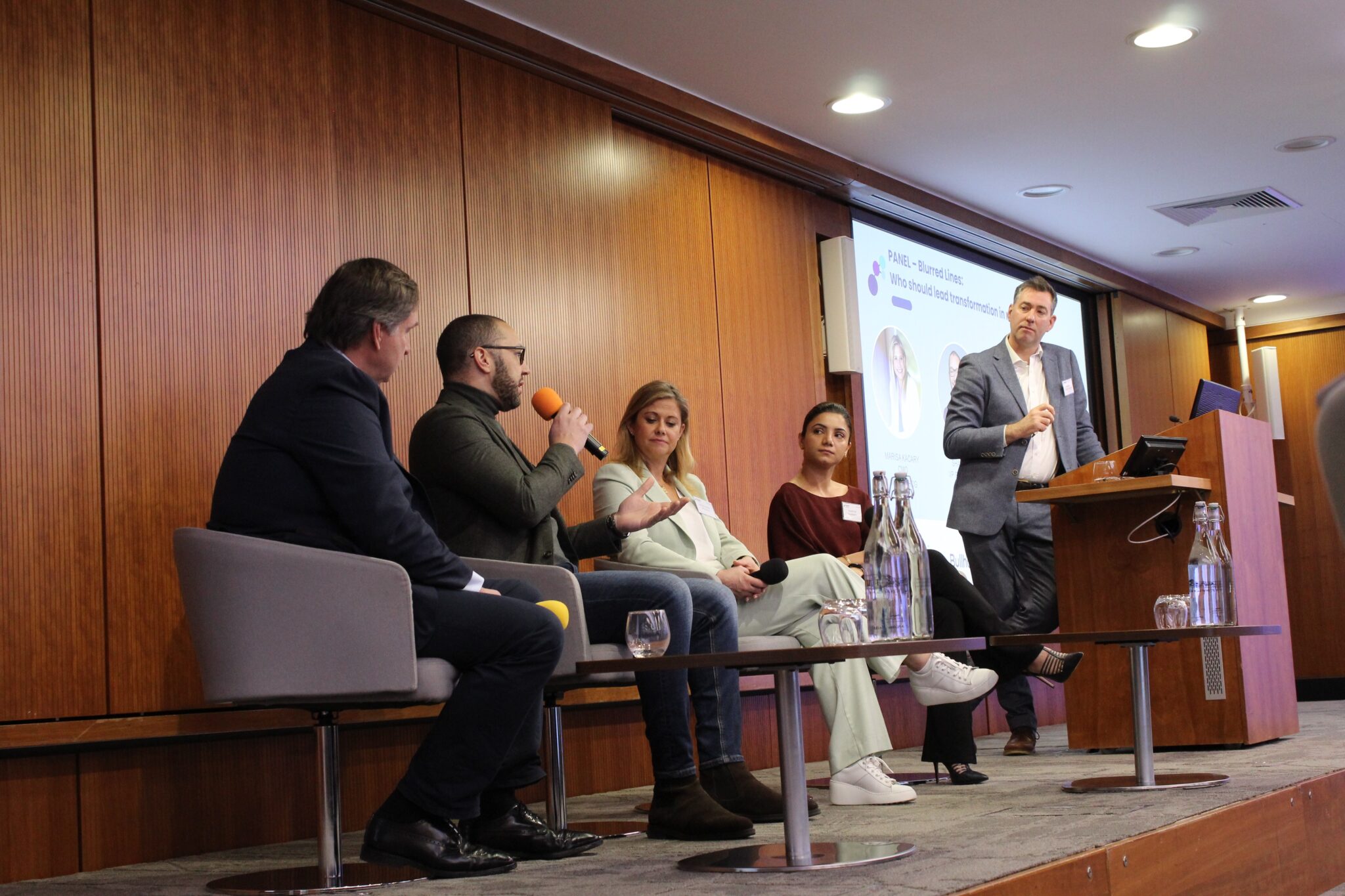CHANGE IS THE ONLY CONSTANT
As the staffing and talent solutions sector emerges from a year it would rather forget, it still faces a challenging market. High-interest rates, high employment, falling vacancies and a shrinking workforce have forced employers to make the most of the talent they already have and recruiters to look for new ways to add value.
With 65% of employers planning to use more contingent workers, and 80% already doing so according to Ceridian’s Executive Survey of 2,020 leaders in August last year, the trend toward staffing firms offering contingent solutions is growing. But is the RPO market growing quickly enough to accommodate more competitors in this space? The prevailing view from TALiNT Partners’ network is that they are too often all competing for the same clients and margins are being eroded. So what will make the pie bigger this year?
Last month, TALiNT Partners’ annual Foresight Summit brought together 100 industry execs, experts, and advisors to explore predictions and priorities for recruitment leaders in 2024.
Panel debates and roundtable discussions focused on the big questions we have been debating in our member sessions over the last few months:
– As the scope of transformation widens to encompass AI and Analytics-enabled solutions, who should lead it?
– How is better use of talent intelligence changing the perception of recruiters?
– Which solutions will be in highest demand globally this year, and what are the risks and rewards of delivering them?
– As new solutions create demand for new skills and capabilities, how should transforming recruiters adapt their own talent strategies and why are more opting to outsource elements of delivery?
“The customer is part of the transformation. You need to research what’s going on in the market and listen to what your customers value to be brave enough to look ahead to the future.” – Marisa Kacary, CMO of Wilson HCG and a NED at Savannah Group
Opening the first panel on leading transformation, former Gattaca CEO and board advisor Kevin Freeguard said recruitment leaders needed to begin with a clear vision & strategy of where they want their business to be in five years, why, and what they need to be successful. “Any change programme requires active support from the leadership of the business, and the right skills aligned to the requirements of the transformation plan to solve, whether it’s data strategy to enable AI or talent strategy to recruit, train or outsource new skills,” he explained.
Shaun Weise, VP Global Sales at Bullhorn, said the lesson of the last few years is that the most successful transformation projects are where the technology providers are included as early as possible so that, by the time it comes to implementation, the strategy and vision is already embedded, and the tech is solving the right problem.
With CFOs and CMOs playing a bigger role in transformation, and making decisions about solutions, which leaders are Bullhorn working most closely with? “We’re seeing a much more unified vision from the C-suite, but ownership shouldn’t only be with the board; those subject matter experts managing at the frontline should be empowered too,” said Shaun, who added that businesses needed a clear communications strategy to effectively manage change, drive excitement and connect all stakeholders to the overarching goal.
Marisa Kacary, CMO of Wilson HCG and a NED at Savannah Group, has been involved in numerous rebranding and brand transformation projects at firms including KornFerry and AMS. “True transformation is radical change and people need to understand why it needs to happen, so I spend a lot of my time on education and engagement,” she said, adding that employees aren’t the only ones that need to be involved. “The customer is part of the transformation. You need to research what’s going on in the market and listen to what your customers value to be brave enough to look ahead to the future.”
TALiNT Partners has tracked the rise of marketing in recruitment over the last year as custodians of data and how to optimise it for growth. Khyati Pal joined Keystream as Marketing Director, and recently became Director of Business Transformation & Change Management, following her success in leading a new data management process with buy-in from the whole business. “The two biggest drivers of change are leadership and skills. Leaders often aren’t present enough and don’t realise they have to actively lead and make impactful moves.
“A little bit of data in the wrong hands is very dangerous and the real value we can add is that clients need someone who understands it and can bring it to life.” –David Gettins, Managing Director of Lorien
“An integral part of actively leading is investing in people so the company has the right skillset to achieve its transformation goals. And there needs to be a strong focus on data and data governance, because it’s the foundation for insights, analysis, and creative thinking.”
INSIGHT IS FORESIGHT
This led into our next panel discussion, which looked at how better use of data and analytics is enhancing the perception of recruiters as strategic advisors and enabling them to consult earlier in the TA process.
“Data intelligence is helping recruitment consultants to engage the right candidate at the right time, recommend more relevant solutions, win more of the right business, price services more accurately, and deliver faster,” said Ollie Harrison, Enterprise Sales Director at SourceWhale. “Going forward, I predict that AI and analytics will be optimised for candidate and client feedback to adapt and design new solutions, particularly around DE&I and more targeted and predictive recruitment to flag intent triggers.”
We then got perspectives from three market leading talent solutions firms that have analytics and insight services: Lorien, Cielo and Cpl’s Talent Evolution Group.
“We have developed a monthly reporting dashboard to provide our clients with better visibility of their contingent worker headcount information across their business divisions, but we have resisted becoming an on-demand Talent Intelligence (TI) provider and are beginning to price for more targeted data sets which might include market insights and specific salary benchmarking for strategic roles and geographies,” said Ben Davies, Client Services Director at Cpl TEG. “It’s a fine line balancing value for clients with pressure to deliver a greater depth of insight. Our role is to interpret the data and we can help clients and TI providers to make decisions based on what we’re seeing in the market.”
David Gettins, Managing Director of Lorien, agreed that interpretation is where providers add value. “A little bit of data in the wrong hands is very dangerous and the real value we can add is that clients need someone who understands it and can bring it to life,” he explained, adding: “We really know what’s happening in real time, which is valuable for clients, and they want more of it without necessarily paying more for it. I predict that demand for TI will grow, and it will be less of a differentiator as it becomes table stakes, but it will cost us more to deliver it because of skills needed. I believe that our business in the future will need to be half recruiters and half data scientists and digital marketers.”
“As marketing accelerates the most in-demand roles are data scientists. We’re also seeing demand for strategic salespeople who are strong in key account management.” – Julie Fouad, Sales Director at IMS People Possible
With internal mobility and talent development a higher priority for HR and TA leaders in recent years, there is a growing opportunity for talent solution providers around retention and upskilling – enabled by TI.
“We shouldn’t differentiate between the internal and external market because both candidates act the same way,” observed Felix Wetzel, VP of Product Management at Cielo. “Data on internal talent is available, but the hinderance is buy-in from employees and their managers to talk about why they are now in the wrong role and should upskill for another. Several organisations have addressed this with an internal headhunting team.
“Data is easy to buy but what we need to understand is behavioural analytics. What worked for us was to think like a political campaigner, canvassing behavioural insight to see where the swing votes are. AI will drive us to go back to old school sourcing.”
This last point on AI making recruiters more human and going back to old school client-engagement tactics with phones and face to face meetings was a recurring theme.
IN-DEMAND SOLUTIONS
After roundtable discussions to digest the first two panels, TALiNT Partners CEO Ken Brotherston set the context for a panel on the highest demand solutions globally this year by sharing the results of his survey of Talent Solutions and TA leaders.
“Employers appear more bullish than providers about demand for Enterprise RPO, MSP, and Total Talent, but everyone is agreed that demand will continue to grow for the strategic use of contingent labour,” he predicted. “We’re seeing a move toward skills-based hiring but the industry needs to join up systems, people and data to optimise capability and turn insight into an opportunity.”
So which solutions and global markets offer the best opportunities for growth?
Despite forecasts of a 3.2% revenue drop, the US staffing industry has defied expectations, with agencies anticipating a 2.1% increase in 2024 (eCapital Corp). The growing freelance population is creating opportunities in the US, with contractors currently comprising 38% of the workforce and forecast to reach 50% by 2027. In a market where people can be fired and hired quickly, younger professionals see the gig economy as more secure.
“Turn the DEI deficit conversation about what’s missing, and why balance matters, to a dividend discussion about what already works and what will be improved by adding.” – Simon Fanshawe OBE, founder of Diversity by Design
“Generation Z approach the world of work in a different way, with side hustles and plural careers, and we’re seeing real growth in wage access in the US across shift-based work,” observed Amy Davies, MD of PGC Group. “More UK recruiters are looking to capitalise on growth in the US, but it is a litigious country, with a multi-dimensional government, where compliance must be managed state by state.”
Regulation to curb the use of AI in recruitment was introduced in New York in May last year to remove bias. “Where New York leads, other states tend to follow, and they will be closely monitoring how the industry responds and adapts,” added Amy.
“We’re still easing into the adoption of AI because face to face client engagement is such an important part of our approach,” said Ben Broughton, Founder & CEO of Primis, who has grown successfully by targeting scale-ups through strategic partnerships with VCs, hosting events to engage prospects and build client networks. “We have seen growing demand for product led-recruitment, packaging up what we do for clients, particularly services around data and DEI. This is where we differentiate with our advisory board, reporting, training, analytics, and proof of impact to help shift the needle around key metrics. We’re agile enough to test different solutions and tech is helping us to build capability around changing client demand.”
Compliance solutions are opening up new routes to growth, at home and abroad. “Recruiters are trying to de-risk their supply chain as they move into RPO, MSP and SOW in the UK as HMRC are stress-testing solutions,” said Daniel Haslam, Group Sales Director at giant group. “Outside the UK, in Europe and the US, recruiters and platforms are having to pay more attention to worker classification as a number of businesses abroad have been facilitating payments without being compliant. The direction of travel on regulation is to put the onus on them so we’re seeing more use of EOR. RPOs are really ramping up their MSP capability, and smaller recruiters are moving up the value chain to operate smaller MSP projects.”
“The C suite of our clients are focused on growth, cost optimisation and risk management; they are all inter-connected, so they want outcomes-based solutions,” added Seb O’Connell, Group CEO of Org. “We have seen greatest demand for total talent and outsourced advisory services, particularly around risk, tech, and transformation assurance; fixing problems where providers have over-promised and under-priced.
“In the UK and Ireland, we’re seeing a lot of demand for outcomes-based solutions in the mid cap market where they feel the bigger players aren’t catering for them, and a big opportunity around SOW. Further East in Asia, internal TA is a stepping stone to HR, and they don’t have a lot of professional recruiters internally, so we’re helping to manage that.”
“Generation Z approach the world of work in a different way, with side hustles and plural careers, and we’re seeing real growth in wage access in the US across shift-based work.” – Amy Davies, MD of PGC Group
Concluding the panel with his prediction for the year, Seb said: “Beyond outcome-based solutions, old school, relationship-building approaches will be even more important in the age of AI and success this year will be about how strong they are.”
TALENT STRATEGIES FOR RECRUITERS
The final panel explored new roles and talent strategies in recruitment to deliver for clients looking for more advisory and analytics-based services.
“Consultants who are obsessed with data are most likely to succeed because if the wrong data is going in then it won’t deliver insight or support AI,” said Neil Curry, Sales Director, UK & EMEA, at TargetRecruit. “At a senior level, we’re seeing more marketing leaders leading tech transformation and data management projects.”
Is AI replacing roles in recruitment? “Automation is replacing the heavy lifting on manual work in the middle and back office,” added Neil. “AI will possibly replace some back-office roles as it’s trusted with credit control, contracts, and checks, but it’s also creating new roles for data analysts and product managers who can sell new solutions.”
Demand for outsourced skills in recruitment is growing and the IMS Group is one of the most in-demand providers of services ranging from staffing to marketing, accounting and payroll to managed IT.
“Client conversations are moving away from cost management to bringing in capability around marketing, back office, tech and data solutions that employers are prepared to pay for,” said Julie Fouad, Sales Director at IMS People Possible. “As marketing accelerates the most in-demand roles are data scientists. We’re also seeing demand for strategic salespeople who are strong in key account management.”
“Our clients want strategic relationships. It’s not about just filling a job. We need to know where they want to be in five years’ time to help them plan and resource more effectively.”
One of those clients is nGage Talent, which comprises over 20 acquired recruitment and technology businesses. Asked why he works with outsourced providers, nGage Talent Group’s CEO, Tim Cook, said: “My philosophy is to be more like Coca Cola – where we own the customers, the recipe and the brand but how the work is actually delivered, or who by (subject to it being of the right quality) is immaterial. Outsourcing has enabled us to scale more quickly around the world.”
“Going forward, I predict that AI and analytics will be optimised for candidate and client feedback to adapt and design new solutions, particularly around DE&I and more targeted and predictive recruitment to flag intent triggers.” – Ollie Harrison, Enterprise Sales Director at SourceWhale
Asked where and when AI will have an impact on talent strategy, Tim predicted that: “We need to crawl, walk, then run. AI and machine learning will only generate revenue with actionable data that helps us to re-deploy candidates and retain clients. We all need to go back to prioritising relationships and delivering against our promises. AI won’t replace relationships.”
With bias one of the biggest concerns about AI, the human element is vital in ensuring diversity and inclusion is embedded into recruitment. Is there a part for technology to play in solving this perennial problem?
The final perspective of the Summit came from Simon Fanshawe OBE, founder of Diversity by Design, who said the conversation around DE&I needs to be reframed to effect real change. “Too often metrics are based on often abstract targets and not on what teams and businesses actually need to perform better,” he explained. “Turn the DEI deficit conversation about what’s missing, and why balance matters, to a dividend discussion about what already works and what will be improved by adding.”
There is a place for AI in recruitment, but the industry needs to look at how it enhances the relationship-building capability that improves understanding of what employers really need and ensures the best match of candidate to role.










